CG Trader
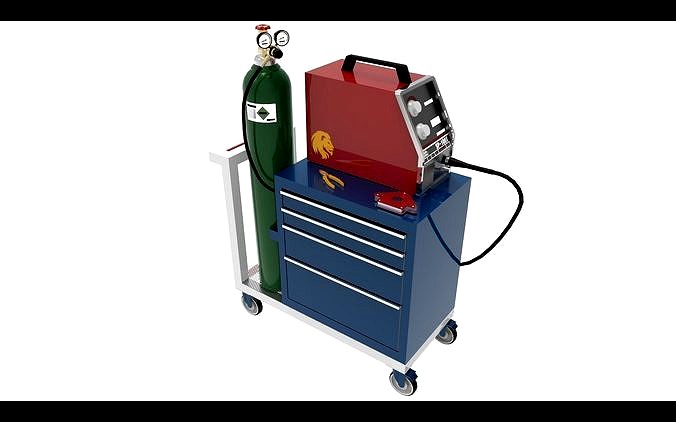
Welding Machine
by CG Trader
Last crawled date: 1 year, 10 months ago
Welding is a fabrication process that joins materials, usually metals or thermoplastics, by using high heat to melt the parts together and allowing them to cool, causing fusion. Welding is distinct from lower temperature techniques such as brazing and soldering, which do not melt the base metal (parent metal). In addition to melting the base metal, a filler material is typically added to the joint to form a pool of molten material (the weld pool) that cools to form a joint that, based on weld configuration (butt, full penetration, fillet, etc.), can be stronger than the base material. Pressure may also be used in conjunction with heat or by itself to produce a weld. Welding also requires a form of shield to protect the filler metals or melted metals from being contaminated or oxidized. Many different energy sources can be used for welding, including a gas flame (chemical), an electric arc (electrical), a laser, an electron beam, friction, and ultrasound. While often an industrial process, welding may be performed in many different environments, including in open air, under water, and in outer space. Welding is a hazardous undertaking and precautions are required to avoid burns, electric shock, vision damage, inhalation of poisonous gases and fumes, and exposure to intense ultraviolet radiation. Until the end of the 19th century, the only welding process was forge welding, which blacksmiths had used for millennia to join iron and steel by heating and hammering. Arc welding and oxy-fuel welding were among the first processes to develop late in the century, and electric resistance welding followed soon after. Welding technology advanced quickly during the early 20th century as world wars drove the demand for reliable and inexpensive joining methods. Following the wars, several modern welding techniques were developed, including manual methods like shielded metal arc welding, now one of the most popular welding methods, as well as semi-automatic and automatic processes such as gas metal arc welding, submerged arc welding, flux-cored arc welding and electroslag welding. Developments continued with the invention of laser beam welding, electron beam welding, magnetic pulse welding, and friction stir welding in the latter half of the century. Today, as the science continues to advance, robot welding is commonplace in industrial settings, and researchers continue to develop new welding methods and gain greater understanding of weld quality.
Gas metal arc welding (GMAW), sometimes referred to by its subtypes metal inert gas (MIG) and metal active gas (MAG) is a welding process in which an electric arc forms between a consumable MIG wire electrode and the workpiece metal(s), which heats the workpiece metal(s), causing them to fuse (melt and join). Along with the wire electrode, a shielding gas feeds through the welding gun, which shields the process from atmospheric contamination. The process can be semi-automatic or automatic. A constant voltage, direct current power source is most commonly used with GMAW, but constant current systems, as well as alternating current, can be used. There are four primary methods of metal transfer in GMAW, called globular, short-circuiting, spray, and pulsed-spray, each of which has distinct properties and corresponding advantages and limitations. Originally developed in the 1940s for welding aluminium and other non-ferrous materials, GMAW was soon applied to steels because it provided faster welding time compared to other welding processes. The cost of inert gas limited its use in steels until several years later, when the use of semi-inert gases such as carbon dioxide became common. Further developments during the 1950s and 1960s gave the process more versatility and as a result, it became a highly used industrial process. Today, GMAW is the most common industrial welding process, preferred for its versatility, speed and the relative ease of adapting the process to robotic automation. Unlike welding processes that do not employ a shielding gas, such as shielded metal arc welding, it is rarely used outdoors or in other areas of moving air. A related process, flux cored arc welding, often does not use a shielding gas, but instead employs an electrode wire that is hollow and filled with flux. welding fabrication hammer manufacturing tool manufacture forge production anvil warehouse line age blacksmith industrial robot robotic gothic medieval industrial
Gas metal arc welding (GMAW), sometimes referred to by its subtypes metal inert gas (MIG) and metal active gas (MAG) is a welding process in which an electric arc forms between a consumable MIG wire electrode and the workpiece metal(s), which heats the workpiece metal(s), causing them to fuse (melt and join). Along with the wire electrode, a shielding gas feeds through the welding gun, which shields the process from atmospheric contamination. The process can be semi-automatic or automatic. A constant voltage, direct current power source is most commonly used with GMAW, but constant current systems, as well as alternating current, can be used. There are four primary methods of metal transfer in GMAW, called globular, short-circuiting, spray, and pulsed-spray, each of which has distinct properties and corresponding advantages and limitations. Originally developed in the 1940s for welding aluminium and other non-ferrous materials, GMAW was soon applied to steels because it provided faster welding time compared to other welding processes. The cost of inert gas limited its use in steels until several years later, when the use of semi-inert gases such as carbon dioxide became common. Further developments during the 1950s and 1960s gave the process more versatility and as a result, it became a highly used industrial process. Today, GMAW is the most common industrial welding process, preferred for its versatility, speed and the relative ease of adapting the process to robotic automation. Unlike welding processes that do not employ a shielding gas, such as shielded metal arc welding, it is rarely used outdoors or in other areas of moving air. A related process, flux cored arc welding, often does not use a shielding gas, but instead employs an electrode wire that is hollow and filled with flux. welding fabrication hammer manufacturing tool manufacture forge production anvil warehouse line age blacksmith industrial robot robotic gothic medieval industrial
Similar models
cg_trader
$23

Gas Tungsten arc Welding
...c and as a result is often automated. welding machine manufacturing robot electrical heat fire tool industrial industrial machine
cg_trader
$17

Gas Tungsten arc welding
... 1930s. a few years later, a direct current, gas-shielded welding process emerged in the aircraft industry for welding magnesium.
cg_trader
$10

Welding Machine R
...bot robot cyborg iron warehouse blowtorch robotic arm industrial machine industrial machine industrial robot industrial warehouse
grabcad
free

CNC plasma cutting machine
...ly achieves metal cutting; the temperature and velocity of the plasma is directly proportional to the outlet pressure of the gas.
cg_trader
$13

Welding Table
...ing is distinct from lower temperature techniques such as brazing and soldering, which do not melt the base metal (parent metal).
grabcad
free

SUB-ARC Fixture
...ss consists in creating a welded joint between steel components using an electric arc submerged beneath a layer of powdered flux.
cg_trader
$350

Platoon welding machine
... instrumentation and other hardware accessories manufacturing industry of various forms of products processing and manufacturing.
grabcad
free

Spot welder
...pot welding is a process in which contacting metal surfaces are joined by the heat obtained from resistance to electric current.
grabcad
free

Automatic TIG welding torch
...tomatic tig welding torch
grabcad
argon auto torch for waam or gmaw robot arm and continiusly welding.
subscribe us on youtube!
cg_trader
$1300

Automatic production line for battery pack electrode welding
...assembly factory automatic mechanic engine tool device robot loading battery lithium welding package electrode industrial machine
Welding
3d_export
$8

welding of electric welding machine
...ng. the melted welding wire penetrates into the parts to be welded. after cooling, the objects to be welded are firmly connected.
3d_export
$5

welded anchor
...welded anchor
3dexport
welded anchor
3d_export
$17

welding jig for welding of instrument frame welding beam
...obot, so that the robot does not stop working when the manual parts are put on and taken, and the working efficiency is improved.
3d_export
$12

mbt welding fixture
... be used for welding design reference, welcome to download and learn from friends in need. the model contains stp general format.
turbosquid
$35

Welding Robot
...id
royalty free 3d model welding robot for download as blend on turbosquid: 3d models for games, architecture, videos. (1645667)
turbosquid
$2

Welding Robot
...id
royalty free 3d model welding robot for download as blend on turbosquid: 3d models for games, architecture, videos. (1480421)
turbosquid
$10

Welding Machine
...ree 3d model welding machine for download as ma, obj, and fbx on turbosquid: 3d models for games, architecture, videos. (1176188)
3d_export
$10

Welding apparatus 3D Model
...welding apparatus 3d model
3dexport
welding apparatus burner gas-jet
welding apparatus 3d model gaj15 60372 3dexport
3d_export
$20

ultrasonic welding machine welding of nose bar outside mask
...and discharging. the drawing file is sw2016 version with step neutral format. it has a good reference value. welcome to download.
3d_export
$21

welding fixture for automobile body
...ile welding line. we must design welding line suitable for automobile and strive to improve the design and manufacturing ability.
Machine
archibase_planet
free

Machine
...machine
archibase planet
sewing-machine sewing machine equipment
singer machine- 3d model for interior 3d visualization.
archibase_planet
free
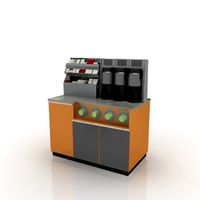
Machine
...hine
archibase planet
percolator equipment coffee-machine
machine n230708 - 3d model (*.gsm+*.3ds) for interior 3d visualization.
archibase_planet
free
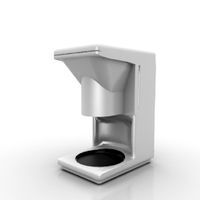
Machine
...chibase planet
percolator coffee-machine kitchen equipment
coffee machine - 3d model (*.gsm+*.3ds) for interior 3d visualization.
archibase_planet
free

Slot machine
...ase planet
slot machine slot-machine playing machine
slot machine n260311 - 3d model (*.gsm+*.3ds) for interior 3d visualization.
turbosquid
$7

Machine
...ne
turbosquid
royalty free 3d model machine for download as on turbosquid: 3d models for games, architecture, videos. (1391792)
3d_ocean
$10
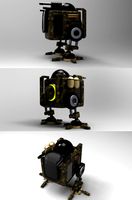
War machine
...war machine
3docean
camuflage machine robot war war machine
war machine created in 3dmax 2009 15.497-poly count
turbosquid
$7
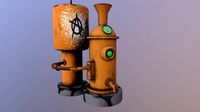
machine
...turbosquid
royalty free 3d model machine for download as obj on turbosquid: 3d models for games, architecture, videos. (1452674)
3d_ocean
$12

Weighing-machine
...weighing-machine
3docean
market shop weighing-machine
3d model weighing-machine
archibase_planet
free

Sewing machine
...ine
archibase planet
sewing machine sewing-machine
sewing machine n080311 - 3d model (*.gsm+*.3ds) for interior 3d visualization.
archibase_planet
free
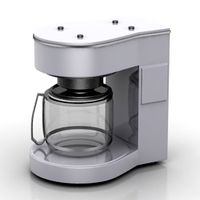
Coffee machine
...se planet
coffee machine percolator coffee-machine
coffee machine n010715 - 3d model (*.gsm+*.3ds) for interior 3d visualization.
